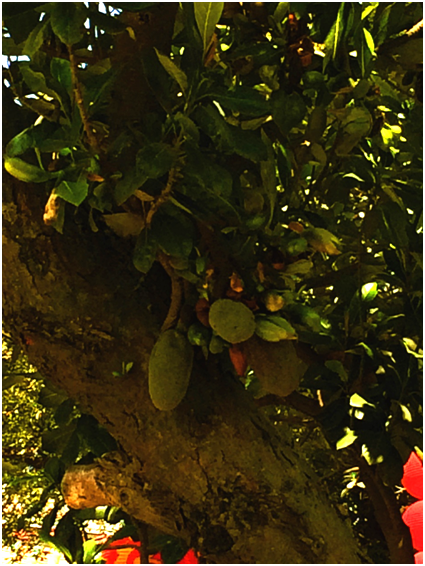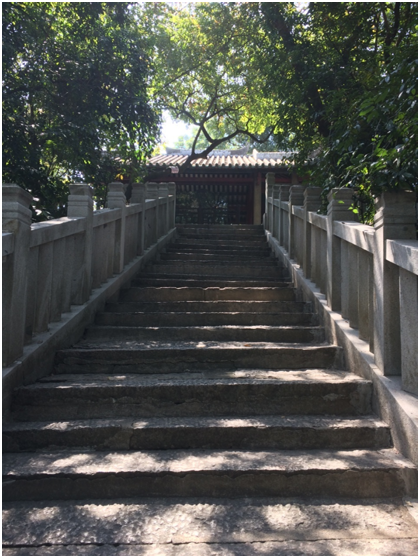I stared at the jackfruits – the green and prickly fruits on the tree – and gasped.
“Is this really the jackfruit tree that’s been here for hundreds of years?” I asked my friend.
“Yes.”
The sky was clear. It was just another sunny day in winter in Guangzhou. I stood with my friend in the shade, lost in thought.
Legend has it that, in the Tang Dynasty (618-907 B.C.), Dharsi, an envoy from the ancient India, carried some jackfruit seeds and planted them in the Nanhai God Temple. He enjoyed himself in the temple so much that he missed the ship back, and had to spend the rest of his life in Guangzhou.
That’s why Nanhai God Temple is nicknamed as Buoluo Temple (Jackfruit Temple).

The Jackfruits
It was not the best time of year to visit the place, for the temple is famous for the Buoluo Dan (Jackfruit Temple Fair), which is held in March every year. Besides, most people go to the temple to light the incense and pray to gods. But we were here to see the relics and feel the history.

The eaves of the temple
The temple was built on emperor’s order, to pray to sea gods for better luck in trade on the sea and for abundant rainfall in the first place. This may be proven by the steles that remain.
The hallways of the temple were lined by steles enclosed by glass. I took my time in observing them. The characters on the steles were neatly carved from top to bottom, from right to left, with the patterns of rolling clouds and dancing dragons on the margin of the stele. Some of the characters had been worn away by wind and rain, while the others struggled to pass down the stories.

The steps to the pavilion
Stepping outside the temple, we made our way to the Sunbathing Pavilion, the spot where the ancient poets used to watch the sun slowly rise from the sea. The pavilion still stood, but the view had gone. What we saw were layers of canopy and beyond that, rows of buildings.

The pavilion
Fortunately, two poems about the view survived through the years and each of them was engraved on one stele, and they were placed back to back in the middle of the pavilion. It is somehow sad to think the sight, which topped the Eight Most Beautiful Views in Guangzhou centuries ago, now only lives inside poems and our imagination. Beauty fades, but thanks to art, we are able to steal a glance before it vanishes.

